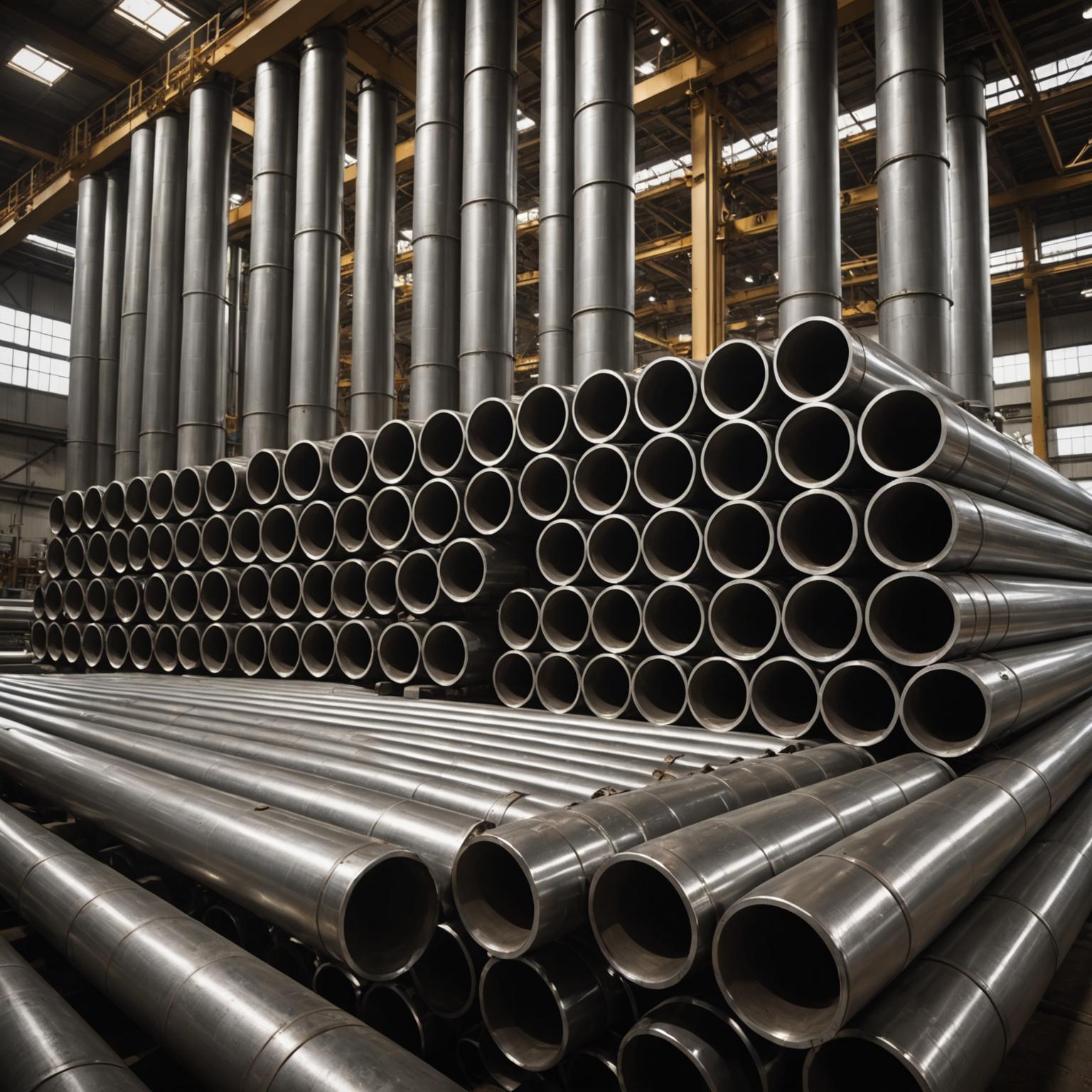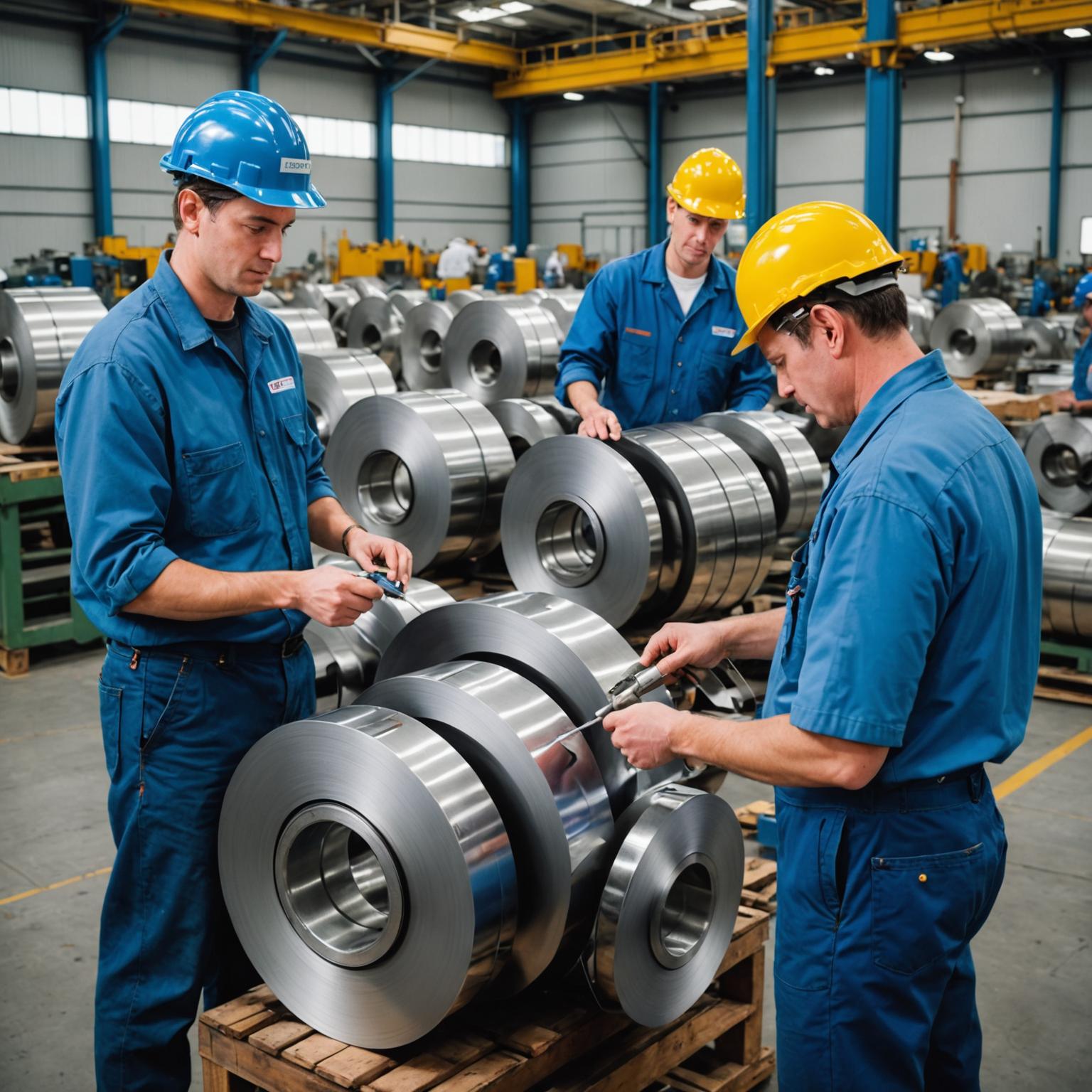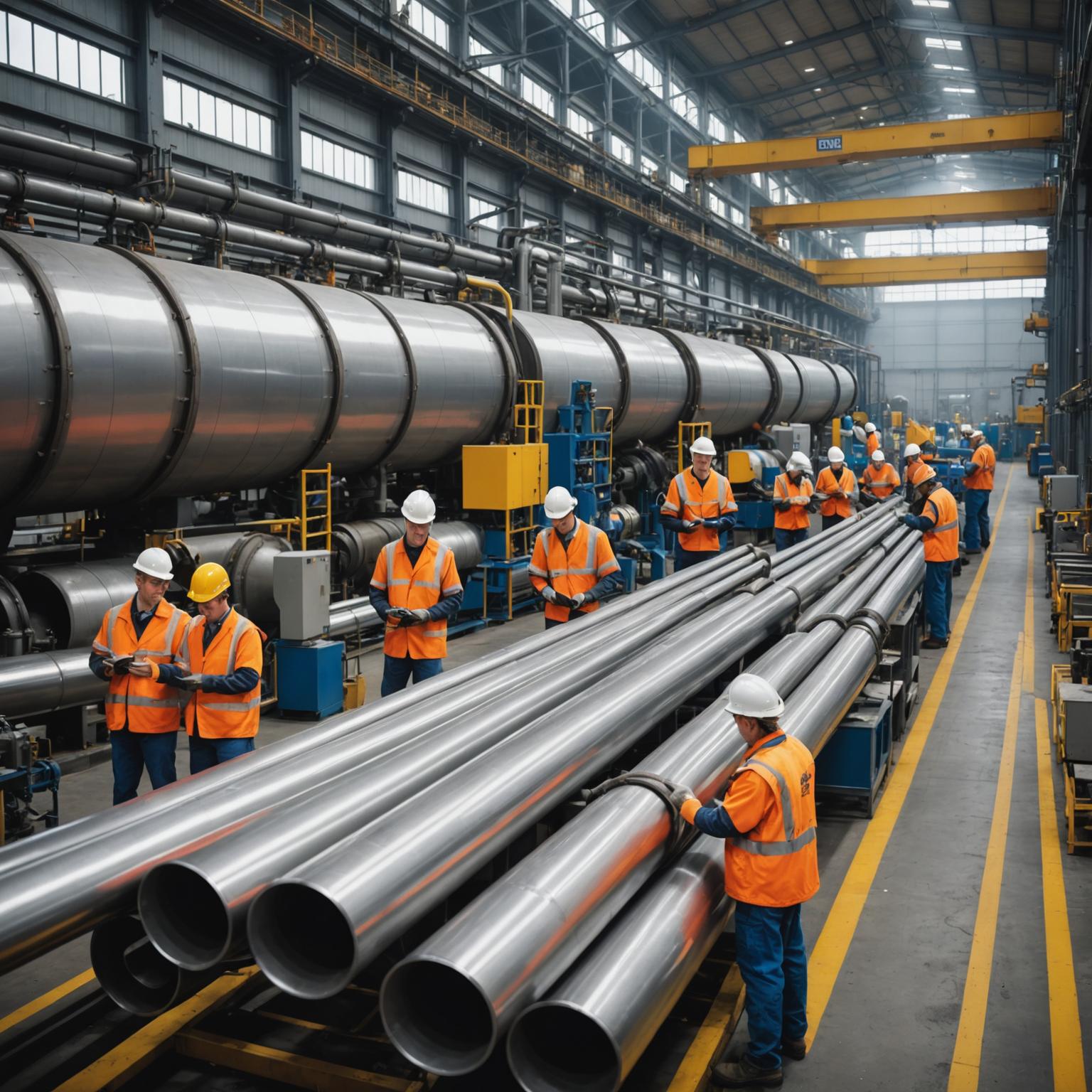Introduction
A stainless steel pipe is renowned for its durability, corrosion resistance, and aesthetic appeal, making it a preferred choice in numerous industries. Our Span International Stainless Steel Pipes, for instance, are crafted from premium-grade steel to offer unparalleled strength and a sleek, polished exterior. However, despite its robust nature, stainless steel surfaces are not entirely immune to damage. Blemishes on the surface can mar the appearance of even the highest quality pipes, leading to concerns about aesthetics. One common issue is surface scratches. Understanding how to address these imperfections is crucial for maintaining the longevity and pristine condition of your installations.
Why Do Stainless Steel Pipes Get Scratched?
The journey of a stainless steel pipe from manufacturing to installation and throughout its service life presents various opportunities for surface damage. Even with materials like our Span International series, which boast an impeccable finish, these unwanted marks can occur. Handling and transportation are common culprits; if pipes are not adequately protected, they can rub against each other or other hard surfaces. During installation, tools, debris, or accidental impacts can cause imperfections. Furthermore, in certain operational environments, abrasive particles, contact with other metallic components, or even harsh cleaning practices using inappropriate tools can lead to unsightly marks. Understanding these potential causes is the first step in minimizing the risk and addressing any damage effectively. The type and depth of these blemishes will dictate the most appropriate repair method.
The Impact of Unattended Surface Imperfections
While a minor mark on the surface might seem purely cosmetic, ignoring such damage on a stainless steel pipe can sometimes lead to further issues. Aesthetically, these marks diminish the clean, modern look that stainless steel is prized for, which can be particularly problematic in architectural applications or environments where appearance is key, such as with our sleek DynamicFlex pipes. Functionally, while high-grade stainless steel offers excellent corrosion resistance, deep or numerous blemishes can potentially disrupt the passive protective layer (chromium oxide layer). If this layer is compromised and not allowed to self-repair or isn't properly treated, it *could* become a nucleation site for localized corrosion, especially in aggressive environments. In sanitary applications, such as food and beverage or pharmaceutical industries, imperfections might also create crevices where bacteria or contaminants can accumulate, potentially complicating cleaning and sterilization processes. Therefore, addressing these surface issues promptly is not just about looks but also about maintaining the material's integrity and performance.
Effective Repair Methods for Surface Blemishes on Steel
When confronted with unwanted marks on your system, the good news is that various approaches to repair are available. The choice of technique depends largely on the depth and severity of the imperfection. It's crucial to first clean the affected area thoroughly to remove any dirt or grease.
For very light or superficial scuffs, often a simple approach is sufficient. You can start with a non-abrasive cleaner specifically designed for stainless steel and a soft microfiber cloth. Gently rub the cleaner along the grain of the steel. Sometimes, this is enough to buff out minor imperfections. Special stainless steel polishes can also work wonders, as they often contain fine abrasives that help to smooth out the surface and restore its shine. Always test any cleaning or polishing agent on an inconspicuous area first. This initial repair method is often the least invasive.
For more noticeable but still relatively shallow surface scratches, a slightly more assertive solution may be necessary. Fine-grit abrasive pads, such as specific non-metallic scouring pads (e.g., Scotch-Brite), can be used. It is paramount to rub *only* in the direction of the existing grain or finish of the steel. Applying even pressure, work the pad along the mark. This process essentially blends the imperfection into the surrounding surface. After this, cleaning the area and applying a stainless steel polish can help restore the uniform appearance. There are also specialized kits for addressing such blemishes on stainless steel that provide various grits of abrasives and polishing compounds, offering a more systematic approach. This repair method addresses moderate damage effectively.
Deeper surface scratches pose a greater challenge and might require more intensive techniques or even professional assistance. For these, mechanical abrasion using tools like a fine-grit sanding block or even specialized grinding tools might be considered, but this should be done with extreme caution. The goal is to carefully remove material around the imperfection to level the surface. This type of an advanced repair method carries a risk of altering the surface finish or even thinning the pipe wall if done too aggressively. After any significant abrasion, especially on a stainless steel system intended for corrosive environments, passivation treatment is highly recommended. Passivation chemically restores the protective chromium oxide layer, ensuring continued corrosion resistance. If you are unsure or dealing with extensive or deep damage, consulting a professional specializing in stainless steel finishing and repair is the wisest course of action.
Preventing Surface Damage: A Proactive Stance
While knowing the correct restorative technique is valuable, prevention is always the best strategy to maintain the pristine condition of your installations. Proactive measures can significantly reduce the likelihood of incurring scuffs and marks in the first place. This begins with careful handling and storage. Pipes should be stored in a way that prevents them from rubbing against each other or other hard, abrasive materials. Using protective wraps or interleaving materials during transportation and storage can make a big difference.
During installation, ensure that tools are used carefully and that the work area is kept clean of debris that could cause damage. Applying temporary protective films to the steel surfaces, especially in high-traffic or vulnerable areas during construction, can provide an effective barrier against accidental damage. These films can then be removed once the risk of problems has passed. Regular maintenance is also key. Clean your installations using soft cloths or sponges and mild, non-abrasive cleaners. Avoid steel wool, steel brushes, or harsh abrasive powders that can easily create new blemishes. Educating personnel on proper handling and cleaning techniques for stainless steel is a crucial preventative step. Moreover, choosing high-quality materials, such as our DynamicFlex Stainless Steel Pipes known for their impeccable finish and resilience, can also contribute to easier maintenance and a lower susceptibility to minor abrasions.
The Advantage of Investing in Premium Piping Solutions
The initial quality of the stainless steel itself plays a significant role in its resistance to surface issues and the ease of maintenance. Investing in premium products, such as our Span International Stainless Steel Pipes, offers tangible benefits. These pipes are crafted from high-grade steel, which not only provides superior corrosion resistance and durability but also often features a more refined and robust surface finish from the outset. This impeccable finish, as highlighted in our Span International series, isn't just for aesthetics; a smoother, well-finished surface can be inherently more resistant to minor abrasions and easier to clean.
While no stainless steel is completely impervious to marking, higher quality alloys and manufacturing processes result in a more resilient material. The advanced techniques used in producing pipes like ours ensure uniform thickness and superior structural integrity, meaning the pipe is less likely to suffer damage that compromises its performance. Furthermore, the emphasis on quality control means that the surface you receive is already optimized for longevity. When surface scratches do inevitably occur due to challenging operational conditions, a high-quality stainless steel pipe often responds better to restoration efforts, allowing for a more seamless return to its original appearance and protective qualities. Choosing such pipes means you're investing in a lower likelihood of damage and a greater capacity for effective, long-term maintenance, safeguarding the aesthetic and functional value of your installations.
Conclusion: Preserving the Integrity and Aesthetics of Your Pipes
Unwanted marks on a pipe system can be a frustrating issue, detracting from the material's sleek appearance and, in some cases, potentially impacting its long-term performance if left unaddressed. Fortunately, a range of effective solutions exists, from simple cleaning and polishing for minor marks to more involved abrasive techniques for deeper imperfections. However, the most effective approach involves a combination of preventative measures—such as careful handling, appropriate cleaning protocols, and protective applications during installation—and starting with a superior product. By understanding the causes of such issues and the available solutions, and by choosing high-quality, durable options like Span International Stainless Steel Pipes, you can ensure your installations remain both functionally sound and visually appealing for years to come, effectively tackling surface problems before they escalate.








